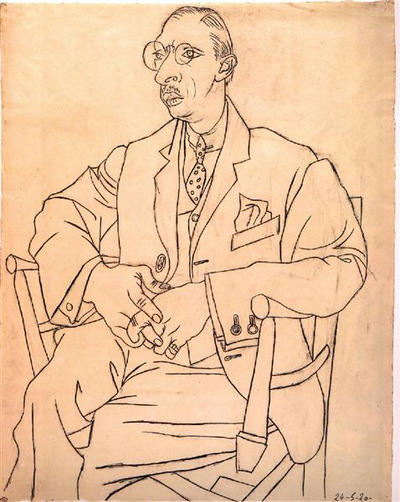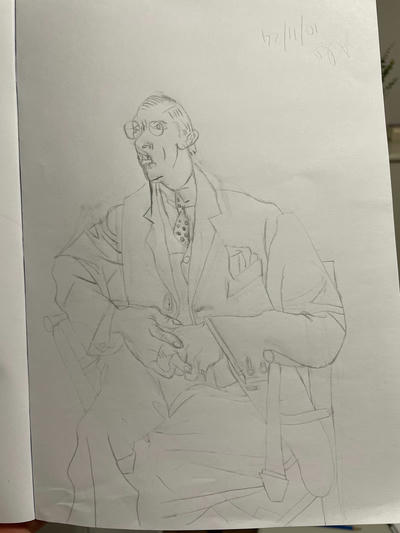In the "Crossing Over from Left to Right" chapter, the "Drawing from the Right Side of the Brain" book I'm following (see drawing) gives you an exercise: you have to draw "Portrait of Igor Stravinsky" by Pablo Picasso, upside down.
So this image:

But instead of drawing it by looking at it straight, it's flipped over, like this:

This is designed to make the "left side"1 (the verbal, analytic, symbolic side) of the brain less active and activate the right side (which focuses holistically on shapes and relationships).
By doing the drawing upside-down, I obtained this result:

Which when turned right way up it looks like this:

I don't think it looks bad at all! I'm personally surprised by the result. That's probably the best drawing I did in my life! As you can notice, the most awkward parts are the hands, and a bit of the mouth. Here my left side "recognised" the shapes even when upside down, and was really trying to get them to be drawn how it knew. The whole drawing took me 3 hours (the book recommended 1 hour, but I had to erase and re-do things to adjust proportions and relationships between lines a few times).
This was another fun exercise. The book recommends to do another one upside down before continuing. I'll do it in the next few days when I have time.